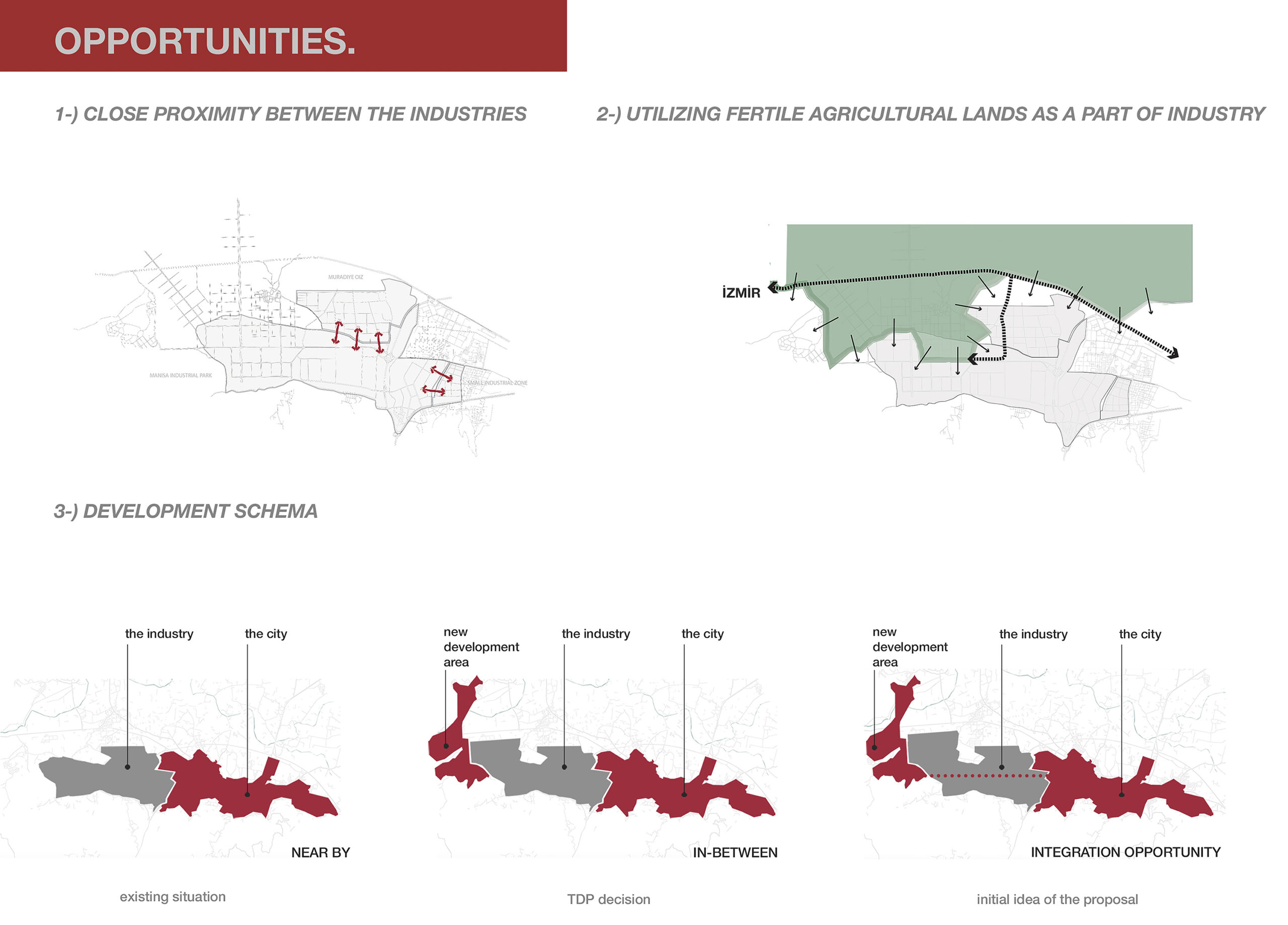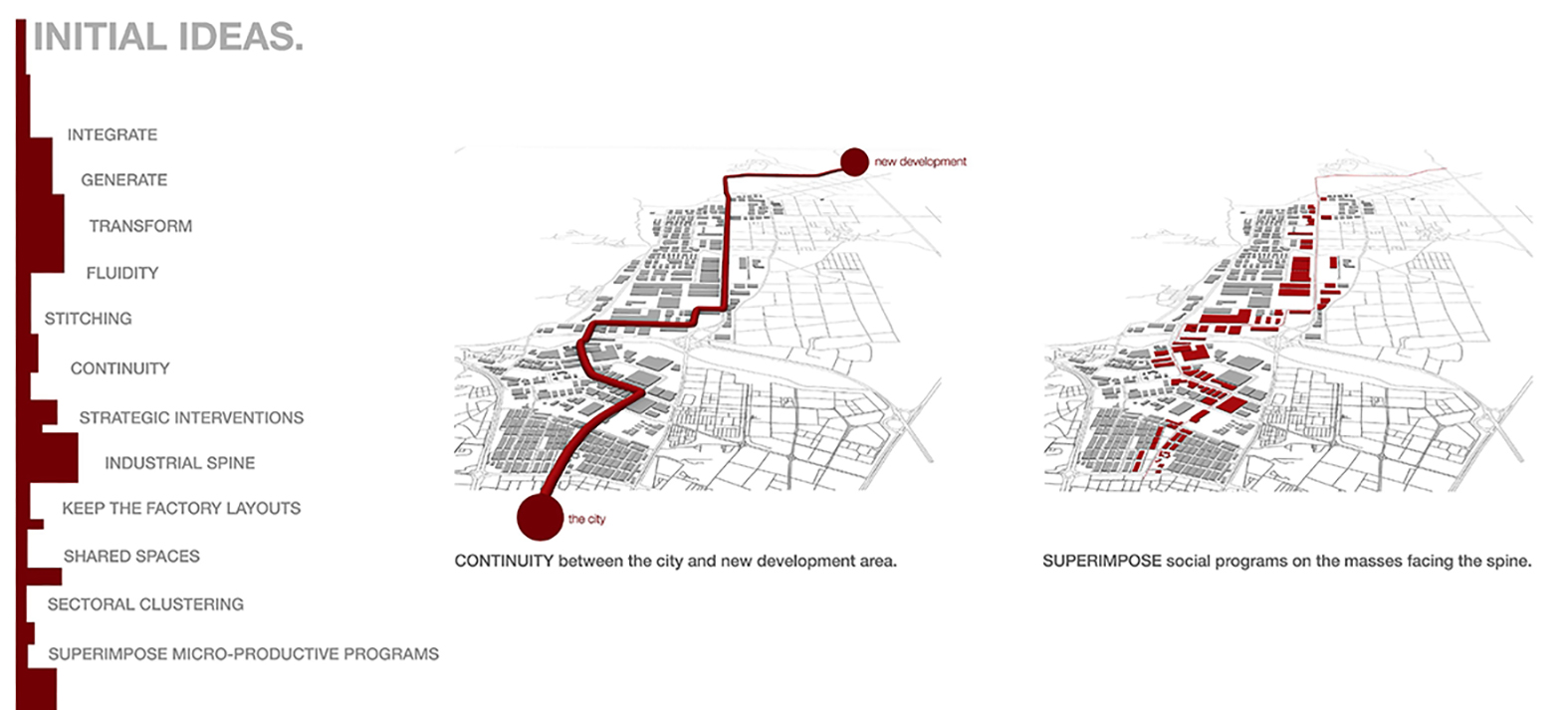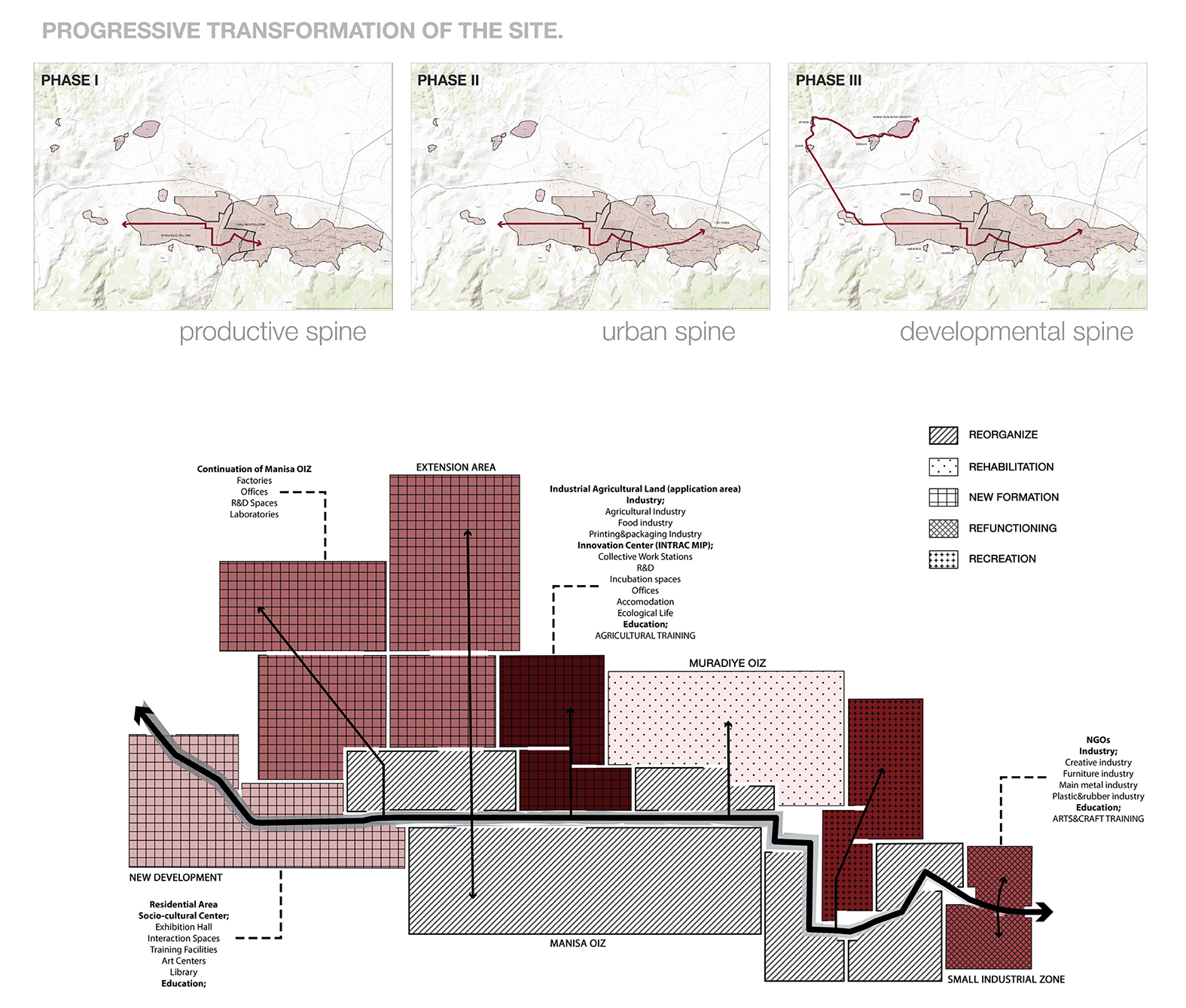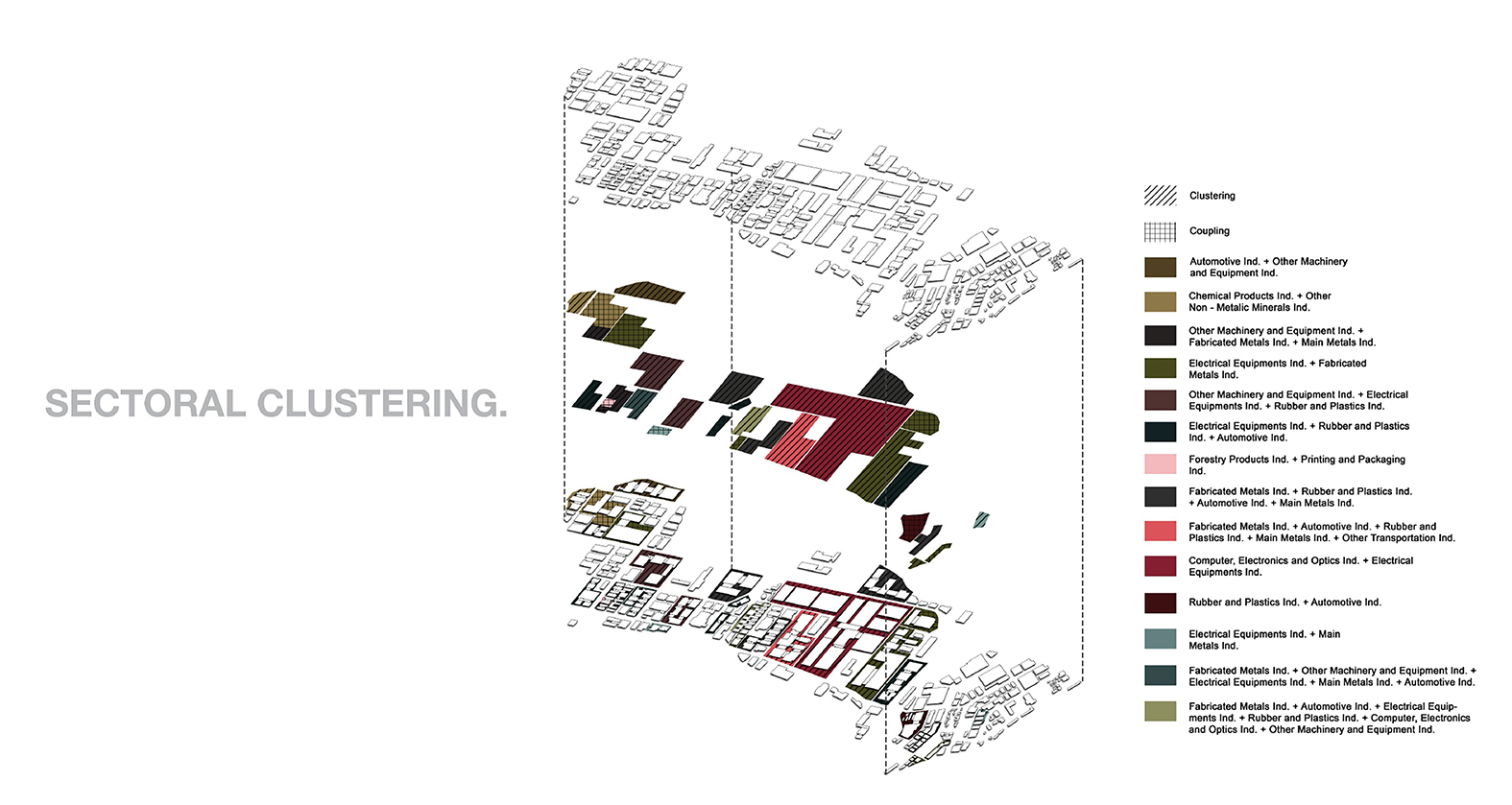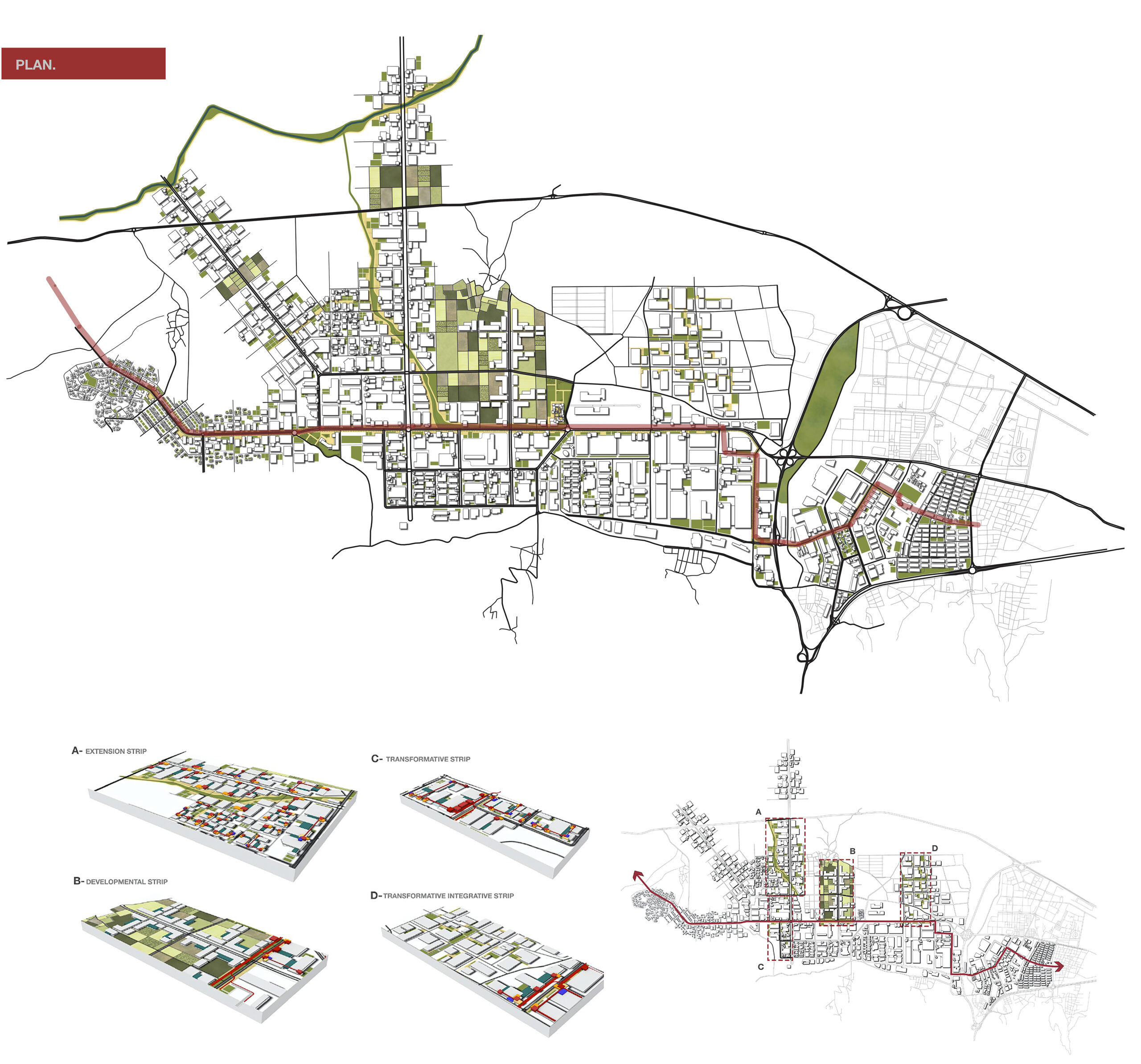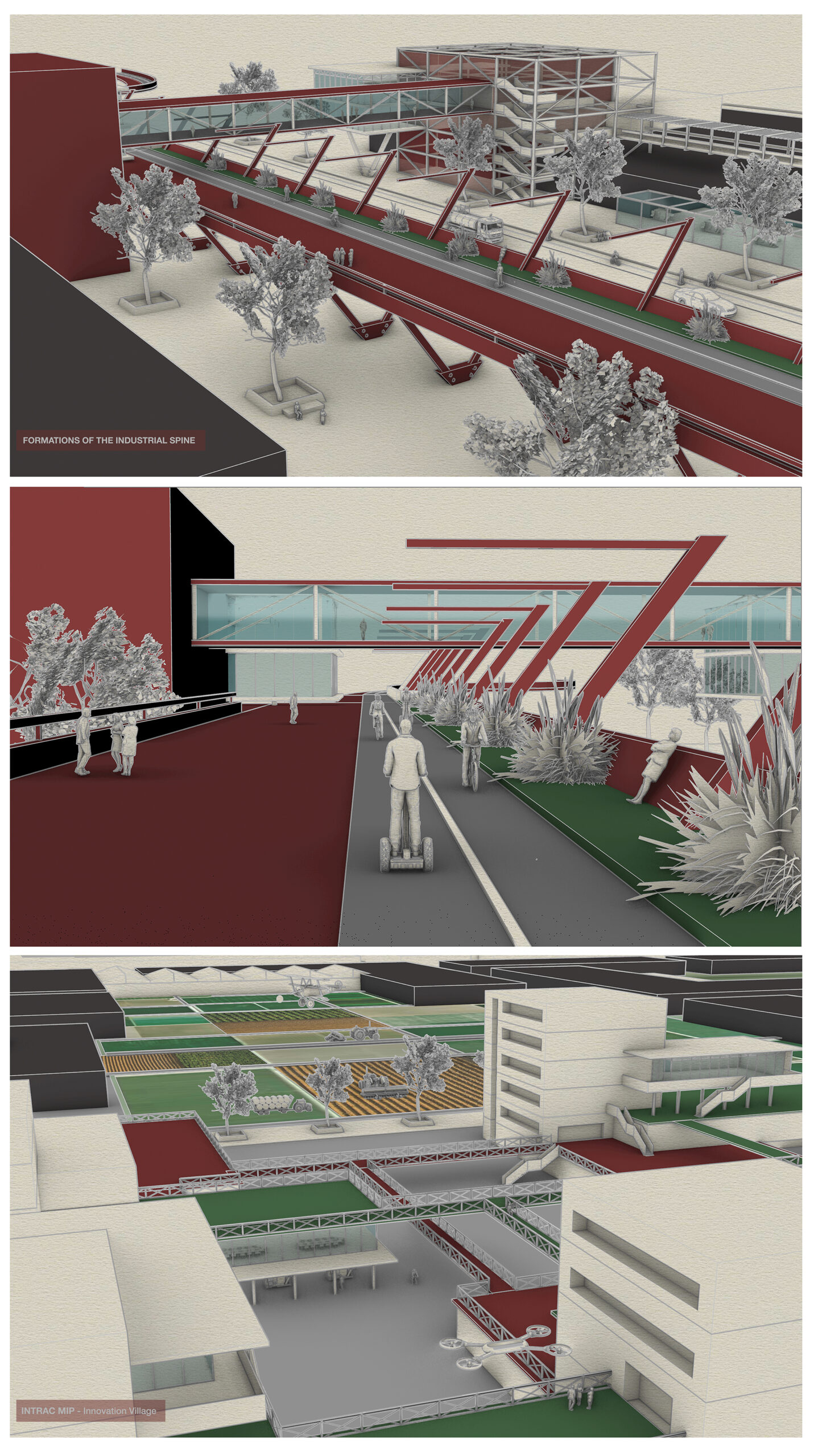‘The Spine’: A generative integration between the industry and the city
How can an effective transformation strategy be built on the widespread fabric and infrastructure of the organized industrial zones? Is it possible to manage the targeted transformation process through the selected focus areas? How can the critical nodes and axes that would lead to the desired transformation be specified? Can this axial development be used as an opportunity to integrate the industrial zone with the city?
It is of great importance for industrial zones such as Manisa OIZ, which have largely completed the core area development and still have a high development dynamic, to manage the said dynamics in a way that supports the integrity of the area. As a matter of fact, the rapid and uncoordinated growth patterns lead to the production of industrial zones with insufficient internal access conditions and common service capacity within many zones in Turkey. The model proposal that aims to eliminate such a condition makes another structuralist approach to urbanism the subject matter of research.
Accordingly, the main axis, which passes through the whole area of Manisa Industrial Park located between the city center and the new development area, is suggested as a tool that will provide the integrity of the area together with the social program areas envisaged to be located on it. Then, the so-called ‘spine’ would guide the future out-growth pattern in addition to its integrative function within the zone itself. In this context, the corridor, which is envisaged to be shaped as an urban backbone that would connect the industrial zone to the city on the east-west axis, is designed as an urban infrastructure element that connects the peripheral development to the area and the city via the extensional axes on it.
Sena Baran | Gamze Tarımeri
